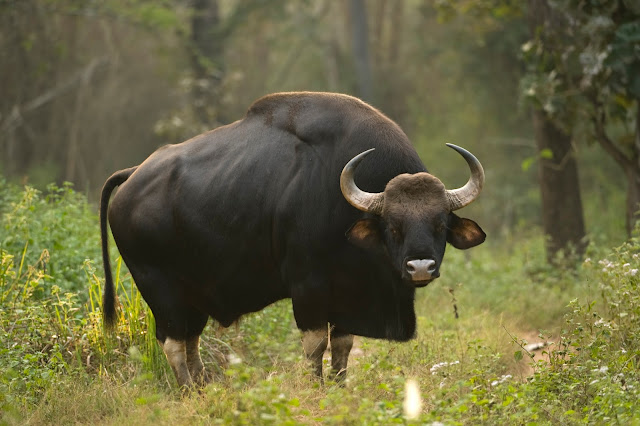The Indian Giant Ape- Hoolock Gibbon
Apes are the closest living relatives to the human being in the animal kingdom.
Now, we are going to meet India's only one giant ape - "Hoolock Gibbon"
Introduction
- The hoolock gibbons are three primate species of genus Hoolock in the gibbon family, Hylobatidae, native to eastern Bangladesh, Northeast India and Southwest China.
- Two species of Hoolock Gibbons, Eastern Hoolock Gibbon and Western Hoolock Gibbon have been reported to occur in India.
Physical Characteristics
- Hoolocks are the second largest of the gibbons, after the siamang.
- They reach a size of 60 to 90 cm and weight 6 to 9 kg. The sexes are about the same size, but they differ considerably in coloration.
- Males are black-coloured with remarkable white brows, while females have a grey-brown fur, which is darker at the chest and neck.
- White rings around their eyes and mouths give their faces a mask-like appearance
Rang in India
- In Northeast India, the hoolock is found south of Brahmaputra and east of the Dibang Rivers.
- Its rang extends into seven states covering Arunachal Pradesh, Assam, Manipur, Meghalaya, Mizoram, Nagaland and Tripura.
- It is the State Animal of Arunachal Pradesh.
Reproduction
- Young Hoolocks are born after a seven months gestation, with a milky white fur.
- After about six months their fur turns black. After 8 to 9 years they are fully mature and their fur reaches its final coloration. Their life expectancy in the wild is about 25 years.
Conservation
- There are numerous threats to western hoolocks in the wild, and are now entirely dependant on human action for their survival.
- Threats include habitat encroachment by humans, forest clearance for tea cultivation, hunting for food and medicine, capture for trade and forest degradation.
- Over the last 30-40 years , western hoolock gibbon numbers are estimated to have dropped from more than 1,00,000 (Assam along was estimated to have around 80,000 in the early 1970s) to the less than 5,000 individual.
- In 2009 it was considered to be one of the 25 most endangered primates, though it has been dropped from the later editions of the list.
Interesting Facts about Hoolock Gibbons
- It is said that gibbons rarely put their feet on the ground, spending most of their day on the top most branches of the trees, swinging effortlessly through the forest using its long arms.
- The mode of locomotive is known as brachiation. they are capable of leaping long distances through the air from branch to branch or running a top the leaves in the treetops.




Comments
Post a Comment